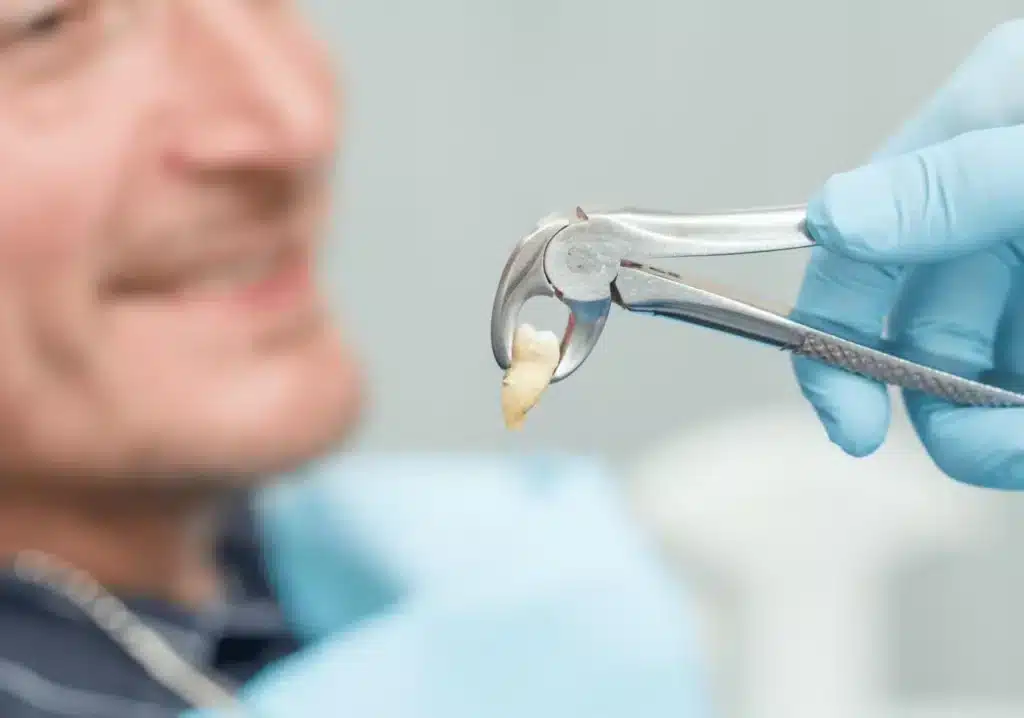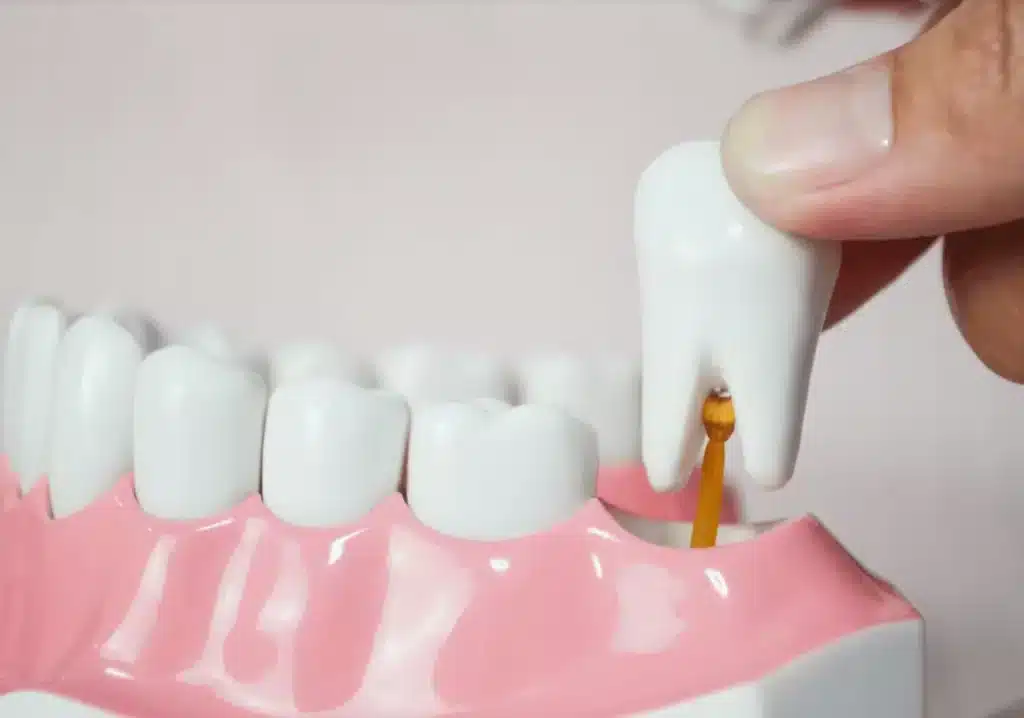Dental tooth extraction is a routine practice by dentists and oral surgeons. Numerous factors can lead to the necessity of tooth extraction, with the primary cause often being irreversible damage. Learn more about dental tooth extraction to gain comprehensive insights.
Dental Tooth Extraction
Dental tooth extraction is a fundamental procedure in dentistry that involves the removal of a tooth from its socket in the jawbone. This procedure holds paramount significance in maintaining oral health and alleviating various dental issues that can compromise overall well-being.
Types of Dental Tooth Extraction
Simple Tooth Extraction
In dentistry, a simple tooth extraction is performed when a tooth is visible above the gum line and can be easily removed without complex maneuvers. This procedure is commonly executed for teeth damaged beyond repair due to decay or trauma. The process initiates with the administration of local anesthesia to numb the surrounding area, ensuring a painless experience. A dental tool called an elevator is then used to loosen the tooth within its socket gently. Once adequately loosened, forceps come into play, grasping the tooth and facilitating its smooth removal. After the extraction, a gauze pad is placed on the site to control bleeding, followed by instructions for aftercare.
Surgical Tooth Extraction
Surgical tooth extraction occurs when a tooth is not easily accessible, often due to partial eruption, significant decay, or a fractured root. This intricate procedure necessitates the expertise of an oral surgeon. Situations demanding surgical extraction include impacted wisdom teeth or teeth with extensive root curvature. Here, an incision is made in the gum to expose the tooth and bone. In certain instances, the tooth may need to be divided into sections for efficient removal. The meticulous approach guarantees minimal trauma to surrounding tissues. Post-extraction, the surgical area requires special attention, with guidelines provided to ensure a smooth recovery.
Why Dentists Extract Teeth?
Dental tooth extraction becomes necessary when a tooth’s prognosis is bleak or unpromising. Before reaching this point, dentists exhaust alternative avenues, including:
- Dental fillings
- Partial restoration
- Dental crowns
- Root canal (endodontic) treatment
Hence, tooth removal is a last resort when other avenues of restoration are exhausted. The prevalent reasons for tooth extraction encompass the following:
- Trauma
- Tooth mobility
- Irreversible tooth damage
- Infections and extensive cavities
- Tooth overcrowding
- Impaction
Preparation for Dental Tooth Extraction
Dental Examination and X-rays
A comprehensive dental examination lays the foundation for determining whether an extraction is imperative. Dentists meticulously evaluate the tooth’s condition, considering factors like mobility, decay extent, and its impact on adjacent teeth. X-rays play a pivotal role in this assessment, revealing the tooth’s position beneath the gum line, potential complications, and the best approach for extraction.
Anesthesia and Sedation
The prospect of extraction often triggers apprehension, which is why various anesthesia options are available to provide patient comfort. Local anesthesia numbs the extraction site, rendering the procedure painless. Sedation options, such as oral sedatives or intravenous sedation, can also be employed, inducing a state of relaxation that eases anxiety and ensures a smooth extraction process.
Stay tuned for the continuation of this comprehensive guide, where we delve deeper into the extraction procedure itself and explore the facets of aftercare, recovery, and potential complications.
Procedure
The procedure for dental tooth extraction is a blend of precision and care. Administering anesthesia takes the spotlight initially, ensuring the patient’s comfort. This involves skillfully numbing the area around the tooth, making the extraction virtually painless. The choice between local anesthesia and sedation is crucial to the patient’s needs.
Tooth removal follows a step-by-step process involving particular techniques and specialized tools. The dentist begins by gently loosening the tooth using an elevator. Once sufficiently loosened, forceps come into play, securely grasping the tooth for removal. While the procedure is relatively swift, patients might experience varying sensations, from pressure to slight tugging.

Aftercare
Do’s
- Adhere to the aftercare instructions provided by your dentist.
- Manage pain with prescribed medications or over-the-counter options as advised.
- Apply cold compresses to minimize swelling.
- Stick to soft foods that won’t disturb the extraction site.
- Drink plenty of water to stay hydrated and aid healing.
- Continue brushing and flossing, avoiding the extraction area.
- Allow your body to recover by avoiding strenuous activities.
- Take prescribed medications on time, if any.
- Attend any follow-up appointments scheduled by your dentist.
Don’ts
- Refrain from smoking or using tobacco products, as they can delay healing.
- Avoid hot or spicy foods that could irritate the extraction site.
- Give your body time to heal by avoiding vigorous exercises.
- Don’t touch the extraction site with your fingers or tongue.
- Don’t neglect oral hygiene, but avoid the extraction area.
- Avoid forceful rinsing for the first 24 hours to prevent blood clot dislodging.
Conclusion
More than ten million dental tooth extractions are conducted annually by skilled dentists and oral surgeons. This well-established procedure assures safety, comfort, and familiarity. Hopefully, this guide helped you determine your potential need for a tooth extraction.


